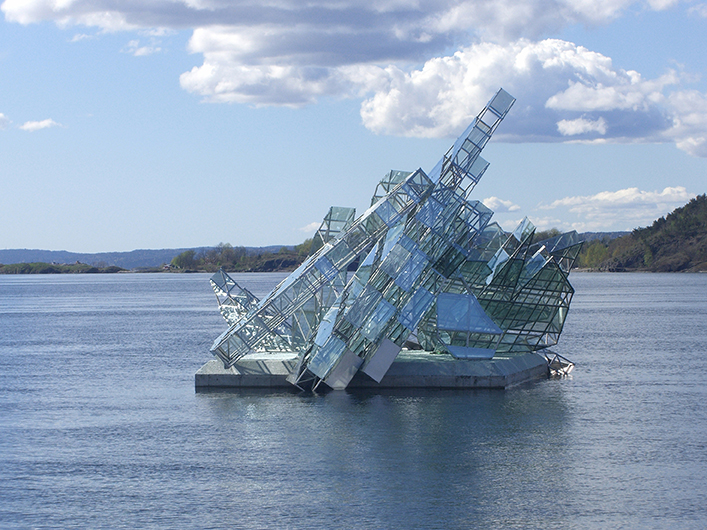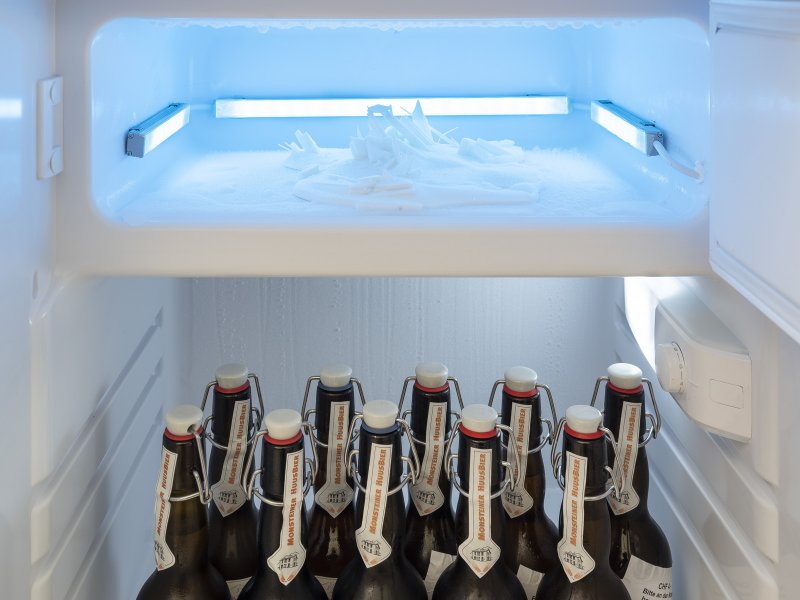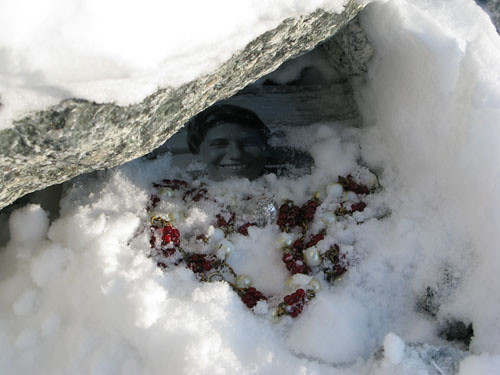1. Group of Seven
In search of a new, uniquely Canadian pictorial language Lawren Harris, J.E.H. MacDonald, A.Y. Jackson, Frank Johnston, Arthur Lismer, Franklin Carmichael, and A.J. Casson founded the Group of Seven in 1920. Still grappling with Canada’s relatively new independence, the artists left the city and turned to the supposed wilderness north of Ontario to help shape their new cultural identity. All of them shared a passion for landscape painting and they wanted to capture the beauty and grandeur of untouched nature, often excluding the very people who populated said “wilderness”: The Indigenous peoples. Magnetic North. Imagining Canada in Painting 1910-1940, a comprehensive exhibition examining and critically reviewing the works by artists around the Group of Seven is currently on view at the SCHIRN.

2. Zaria Forman
Zaria Forman’s hyperreal soft pastel paintings document the effects of climate change on the arctic landscape on a huge scale. She travels to remote places to capture the ever-changing ice fields of Antarctica, Greenland, and Arctic Canada. She even joined a group of NASA scientists to fly over glaciers, sea ice, and mountaintops, gaining an entirely new perspective on the reclining ice masses on both poles. Inspired by her late mother, renowned photographer Rena Bass Forman who devoted her work to the most remote places on earth, Forman led an artist voyage up the coast of Greenland in 2012 to fulfill her mother’s last wish to visit the Artic, unfortunately she died of cancer before that was possible, and to find new inspiration. When she saw the effects climate change had on the rural area and its residents, she decided to dedicate her art to climate change and has been working on it ever since.

Whale Bay, Antarctica No. 4, 84 x 144 inches, soft pastel on paper, 2016. Image via www.zariaforman.com
3. Sean Yoro (aka Hula), A’o’Ana, since 2015
Sean Yoro aka street artist HULA became widely known for his A’o’Ana (The Warning) project. Standing on a paddle board, the Hawaiian native uses non-toxic paints to create, often female, figures on the melting sea ice, a strong metaphor that combines art with his desire to raise awareness for the devastating effects of climate change. In 2016, Yoro went to the Arctic and established a connection to the Inuit community living on Baffin Island – one of them later became the model for one of his murals – to not only raise awareness for climate change, but also intricately connect it to the people who live in these parts of the world.

4. Monica Bonvicini: SHE LIES, 2010
C.D. Friedrich’s “Das Eismeer” depicts large shards of ice, pushing each other out of the water and forming a huge iceberg. For Friedrich, nature was superior to man and held a spiritual meaning, and the North was his holy grail. Since its origin in 1823-24, the painting served as an inspiration for many artists, including Canadian artist Lawren Harris who also was part of the Group of Seven. It also inspired Monica Bonivici’s monumental sculpture of floating stainless steel and glass named “She Lies”, permanently installed in the waters of the harbor of Oslo just across the Oslo Opera House. The modern reinterpretation of Friedrich’s painting references the central motive of the work aka the massive pieces of ice, functioning as symbols for the magnitude of the North. The sculpture, while tethered to the harbor floor, can float freely on the continuously moving fjord, invoking the constant change of nature.

She Lies, 2010, Permanent installation on the Bjørvika Fjord, in front of the Norwegian Opera and Ballet, Oslo, Photo: Monica Bonvicini. Image via monicabonvicini.net
5. Mathias Kessler, Das Eismeer. Die gescheiterte Hoffnung (The Arctic Ocean. The failed hope), 2012
Imagine a fridge standing in an art gallery, inside only beers and a small 3-D ice version of Caspar David Friedrich’s famous Romantic painting “Das Eismeer” (The Sea of Ice). Every time someone opens said fridge the temperature rises just a little, slowly but surely melting the sculpture inside. Growing up in an Alpine ski area in Austria, Kessler learned early on what human intervention could do to our environment. It comes as no surprise that he picked the classic Romantic painting by Friedrich since he has been critiquing the enduring romantic fiction about the concept of nature in his works for quite some time. In using the individual as an almost co-producer of the piece, he forces the audience to engage more in-depth with the social and environmental issues attached.

Mathias Kessler, Das Eismeer. Die gescheiterte Hoffnung, installation view, Kirchner Museum, Davos, photograph: Stephan Bösch. Image via www.art-werk.ch
6. Olafur Eliasson & Minik Rosing, Ice Watch, 2014
For “Ice Watch” artist Olafur Eliasson transported small icebergs from the Nuup Kangerlu fjord in Greenland to three different public locations in Europe over the course of several years: To Copenhagen in 2014, to Paris in 2015, and finally to London in 2018/19. All of the dates are honoring major climate change conferences and reports. The public can interact with the artic ice and literally watch it melt, as the artist tries to visually remind people of the impact of climate change on the environment. Eliasson tries not only to show people the dire consequences humanity is facing, but more importantly is interested in inducing an emotional response, an experience to a most of the time very abstract concept – and ultimately hopes to change behavior.

Ice Watch, 2014, Bankside, outside Tate Modern, London, 2018, Photo: Justin Sutcliffe. Image via olafureliasson.net
7. Camille Seaman, The Last Iceberg Series, since 2006
Camille Seaman, born to a Native American father and an African American mother, learned early on that everything is connected. When America went to war after the fall of the Twin Towers in 2001 (Seaman was in New York during that critically moment in modern US history), she decided to search for the beauty in the world instead. Starting a decade long journey from pole to pole, she shot icebergs like they were people and after a while started noticing the creeping change of the icy landscape. Her photography series “The Last Iceberg” is a chilling and brutally beautiful document of climate change.

Grounded Iceberg, Stranded Iceberg, Cape Bird, Antarctica, December 25, 2006, Image via www.lensculture.com
8. Sophie Calle: North Pole / Pôle nord (2009)
In 2008, French conceptual artist Sophie Calle went to the North Pole to fulfill her late mother’s lifelong dream to visit the High Arctic. She was invited by Cape Farewell, a non-profit program, organizing expeditions to bring artists and creatives to the frontline of climate change and help the public to engage with these dramatic issues through an artist’s lens. Calle brought three things from her mother with her: a photo, a ring, and a necklace and on a bright October day buried them under a rock on Northern Glacier: “Will climate change carry her out to sea as far as the Pole?” With “North Pole / Pôle nord” she not only documented said expedition, but also by using a very personal, intimate experience inspired further artistic exploration.

North Pole / Pôle nord, 2009 (detail). Image via www.capefarewell.com
9. Simon Beck
One day after skiing in his home region of the French Alps, Simon Beck decided to walk around in the snow to keep active. He walked from a center point in a star like motion and just like that the former cartographer invented snow drawing. That new hobby quickly turned into a complex and elaborate art form, with the artist creating more intricate geometrical patterns in the snow, sometimes walking for twelve hours a day. His largest piece so far took him 32 hours over the course of four days and was larger than six soccer fields. Since 2009 he has been a professional snow artist, traveling across the world, stamping his footsteps into frozen lakes, glaciers, and mountain sites. In 2015, he spent a week in Alberta, CA to create his massive mathematical shapes in the snow of Banff National Park.

10. Christian Houge: Arctic Technology & the Global Seedvault Series, ongoing
Reminiscent of an alien ice planet, the island of Spitsbergen located between Norway and the North Pole plays home to some of the most complicated technology on earth, trying to document humanity’s impact on climate change, as well as, an enormous Seedvault, hosting seeds from almost every country in the world – like a ginormous backup for the planet’s biodiversity. For fourteen years, Norwegian photographer Christian Houge has been fascinated by the relationship between nature and culture, documenting the Seedvault and its surroundings as a reminder for the trouble that relationship has been going through in our contemporary times.

Arctic Technology & the Global Seedvault. Image via christianhouge.no